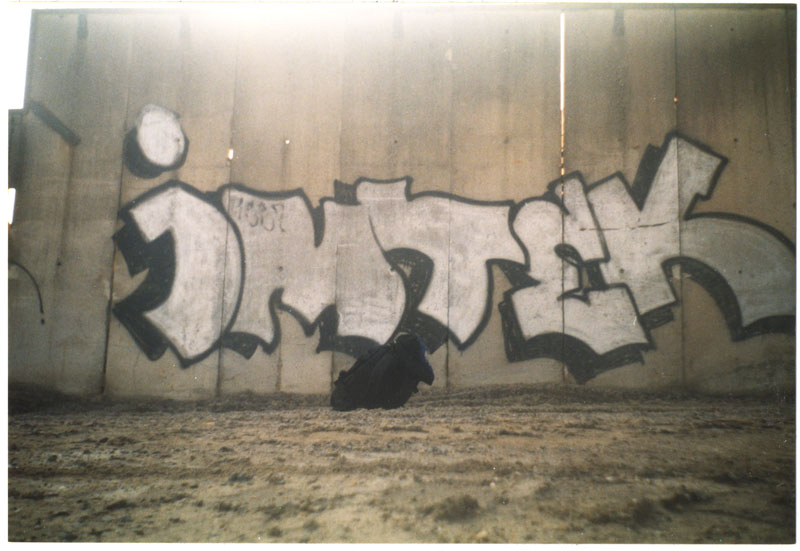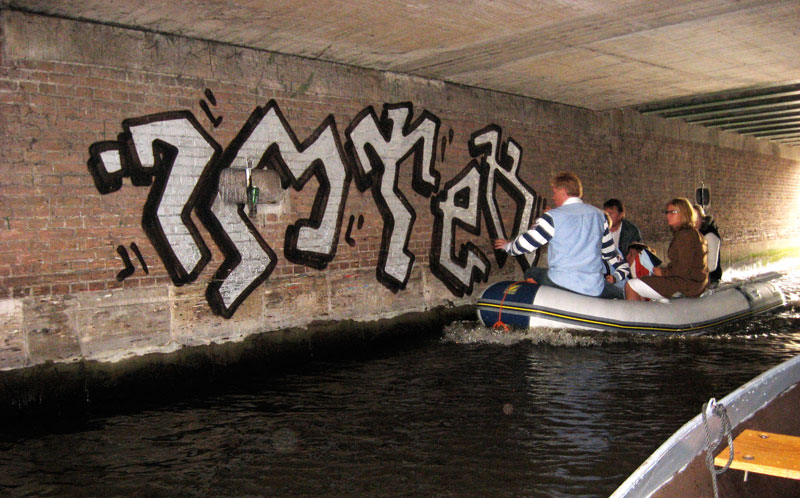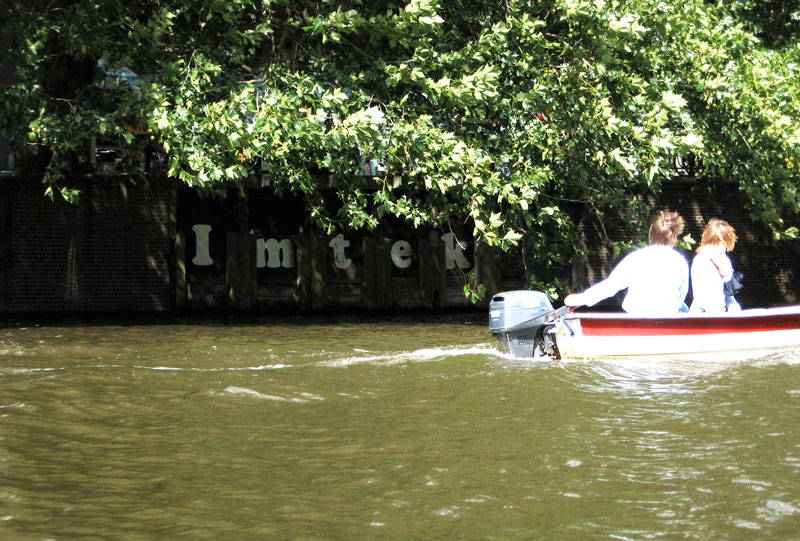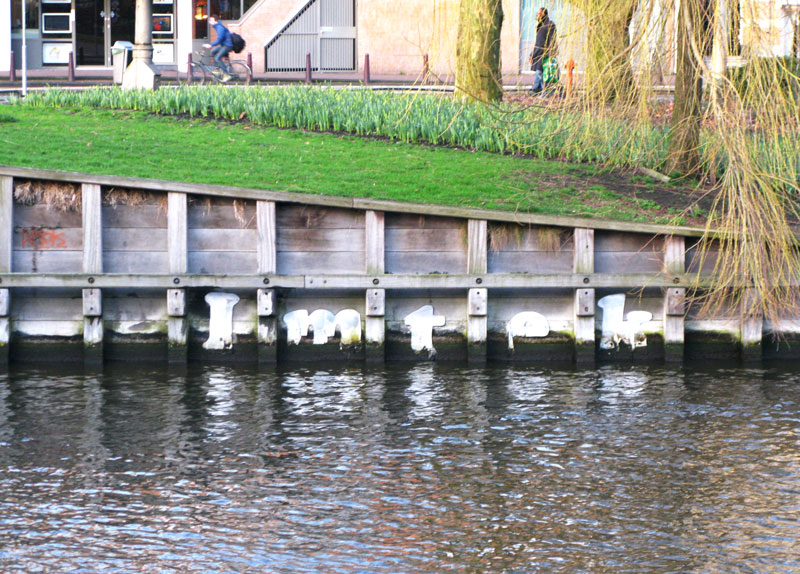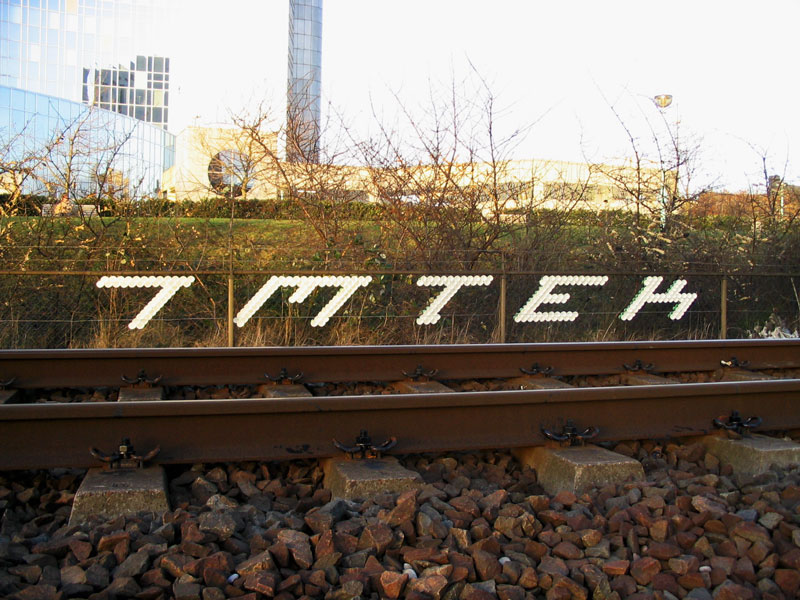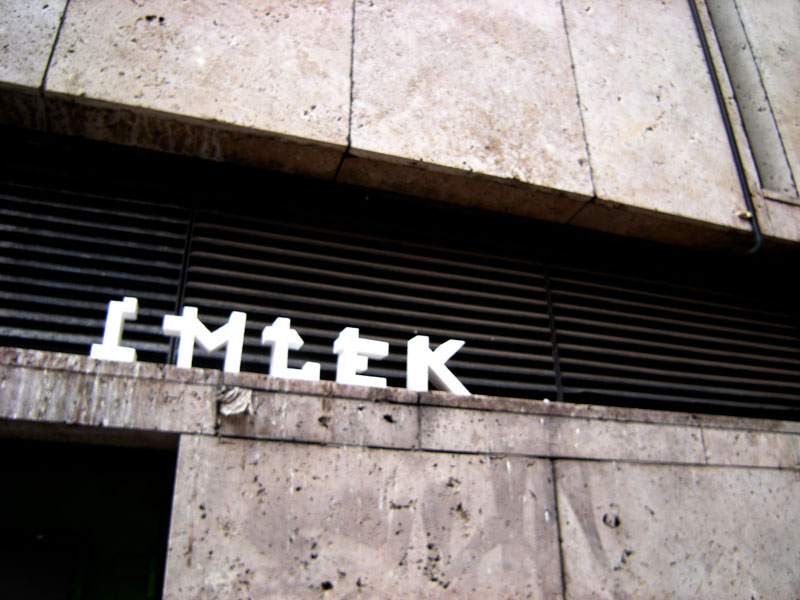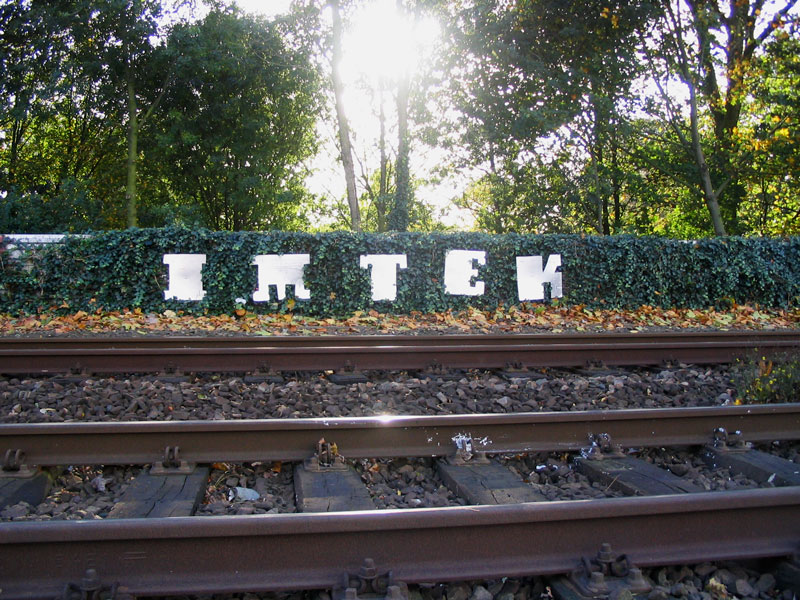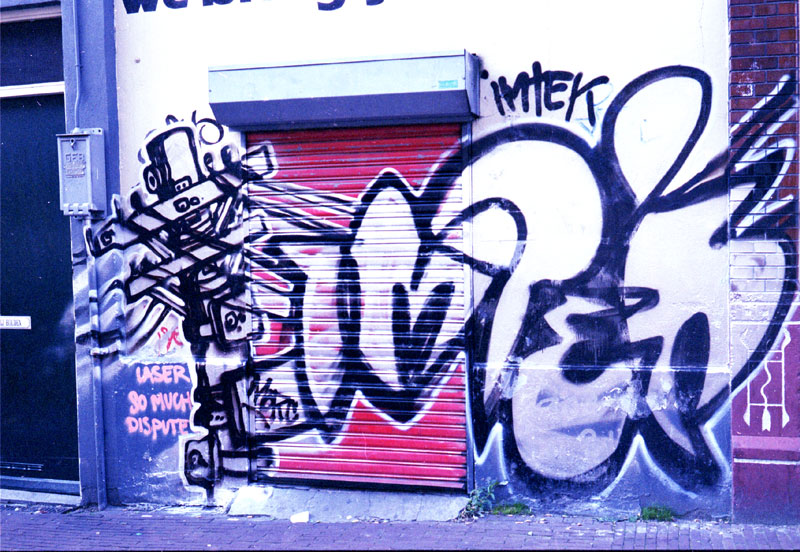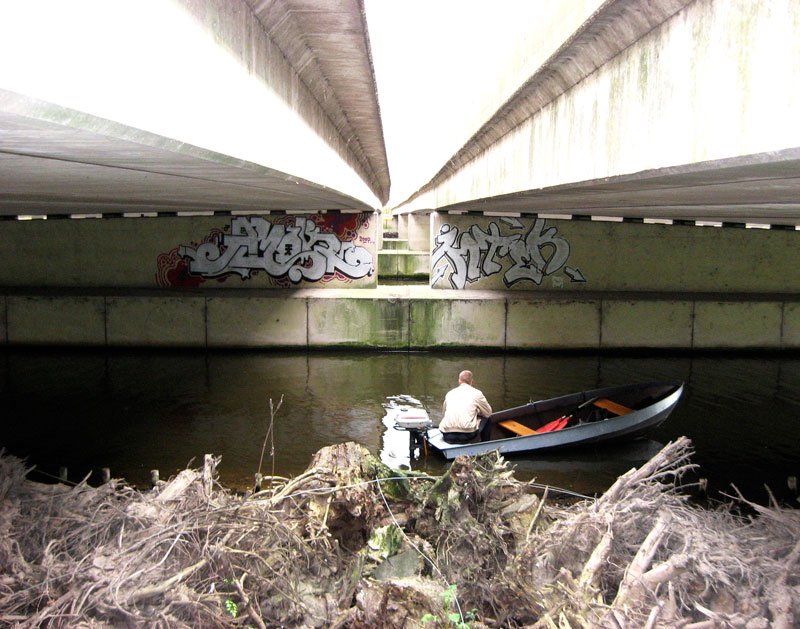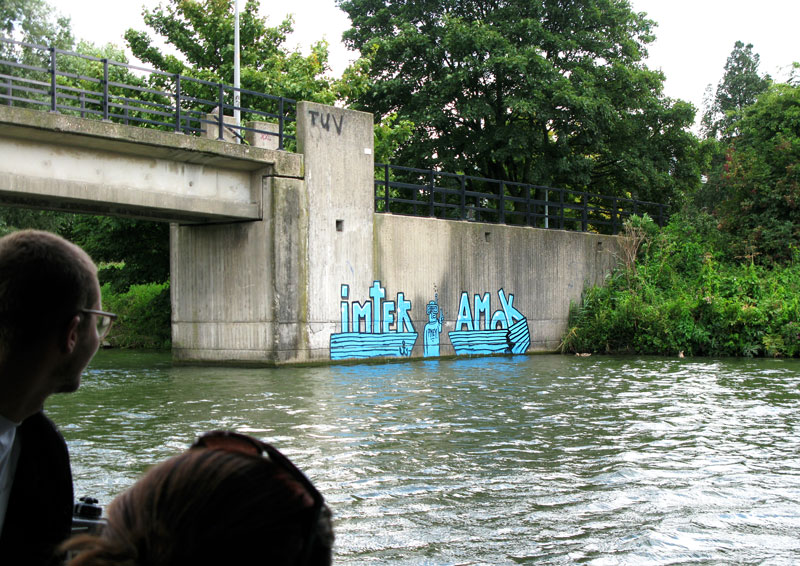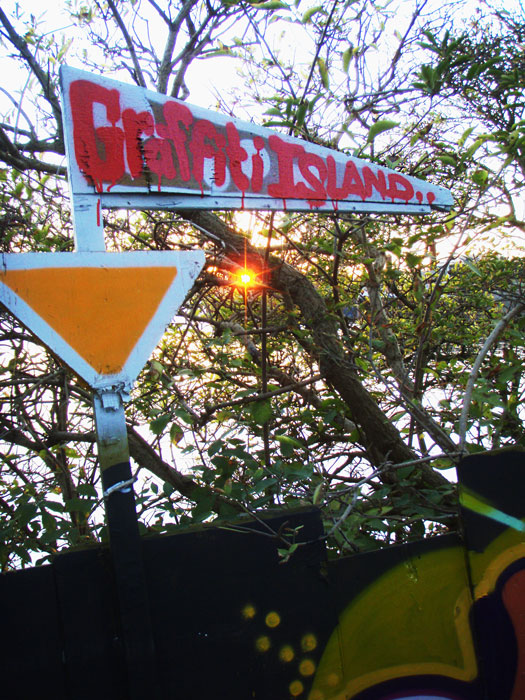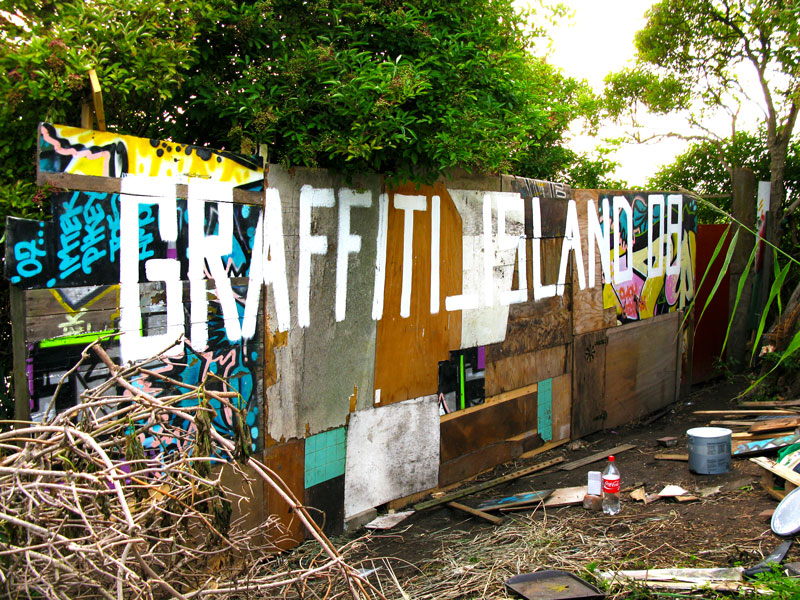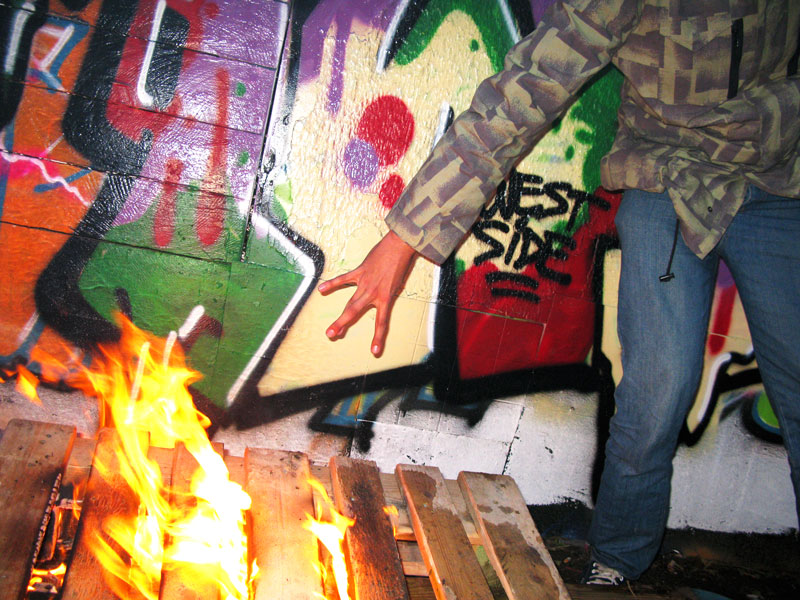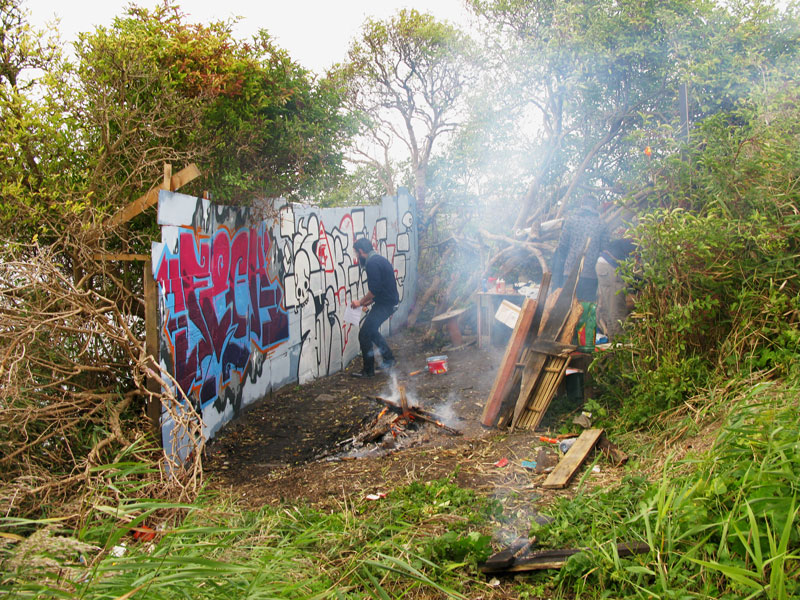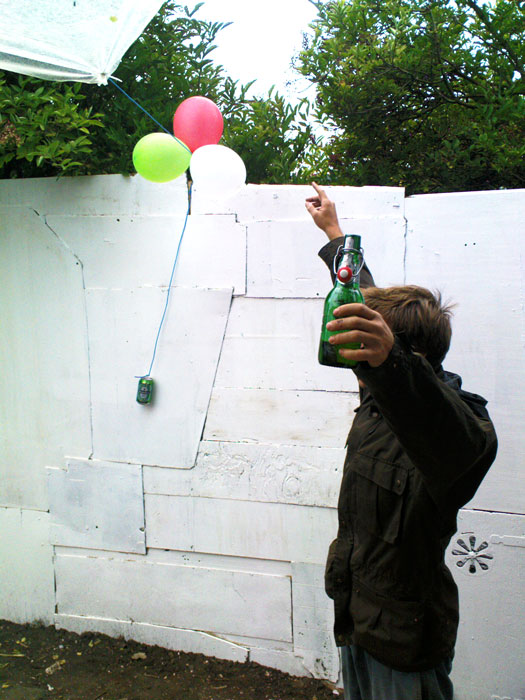Alongside classic graffiti, IMTEK has always experimented name-writing with the most uncommon mediums and in the weirdest spots, including along Amsterdam’s canals –which he conquered during his glorious years of doing boat graffiti.
IMTEK moved to Amsterdam in 2000 to study and to hang out with his skateboarding friends. Back then, there were a few classic Amsterdam spots bustling with skaters, such as the one by the Dutch National Bank or the skate park “3rd Floor,” every inch of which was covered in graffiti.
“The skateboarding scene was pretty big in Amsterdam, but I was also traveling to different cities to attend skateboarding events, which sometimes were also graffiti events. These two scenes are both about freedom, so they were overlapping.”
IMTEK
There was a lot of energy spreading from the skateboarding and graffiti scenes, and Imtek quickly realized he wanted to be a part of that.
“When I moved to Amsterdam, I was already a bit into graffiti, although I wasn’t really active. But I did notice all the names on the walls: it impressed me and, at a certain point, I became eager to learn everything.”
IMTEK
Although the golden age of Amsterdam’s graffiti had passed already, at the dawn of the new century, the streets of Amsterdam were still bustling with independent public art and name writing. The city was rougher, more edgy, and definitely more exciting for all those free souls roaming around at night.
“Or maybe that’s simply because I was 20 years younger, I’m not amazed that quickly anymore. Back then finding new places really amused me, as well as spotting tags. I still remember when I saw a tag from New York’s QUIK: it astonished me that there were still traces of that graffiti generation in Amsterdam.”
IMTEK
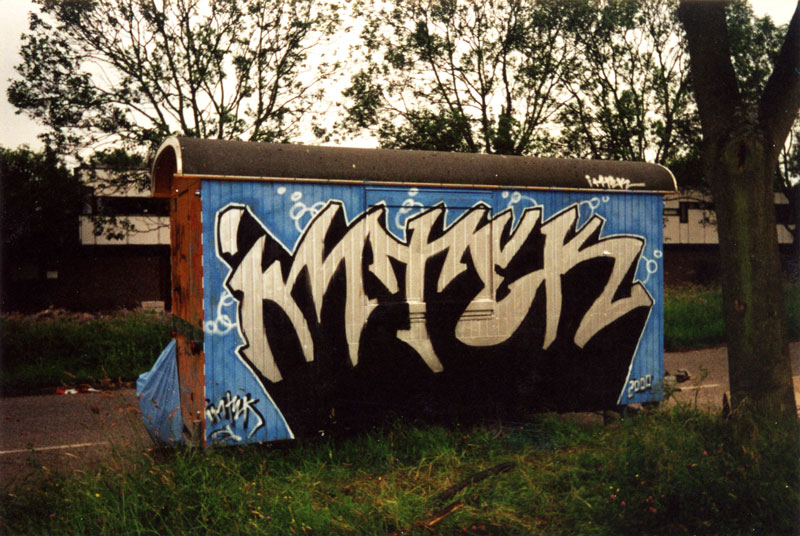
Within the Dutch graffiti scene, ‘bouwkeet graffiti’ (writing on construction trailers) is an alternative to painting on a train.
During his first years in Amsterdam, IMTEK was painting classic graffiti, which essentially means he was simply writing his name onto walls.
“Since 1997, my name has always been IMTEK. It doesn’t mean anything. I just like how it sounds, perhaps because it has the word ‘tag’ in it. The K at the end turned out to be a pretty cool thing lettering-wise, and I also like the hard, futuristic sound of it.”
IMTEK
After a few years of classic graffiti, IMTEK began trying out different things. He was inspired by some of the work he could find on the New York-based website Wooster Collective. On this site, he could discover artists from all over the world who were also pushing graffiti forward by doing uncommon pieces – pieces that had nothing to do with graffiti, but with a 100% graffiti approach. Following the work of these ground-breaking artists –among which Stockholm-based Akay and Adam- pushed him outside the graffiti box.
The switch happened slowly, and although IMTEK has always kept painting classic graffiti alongside, his name-based installations were unique in Amsterdam’s scene, so they stood out quickly.
“I was astonished by the fact that there was so much more than graffiti! I labeled it as ‘street art’, which is a different thing than graffiti. I found out that I liked the energy of both, I didn’t want to choose between them and –most of all- I didn’t want to have limitations. There were so many ‘unwritten rules’ in graffiti, like ‘you should do colorful pieces’ or ‘you should do silver pieces.’ I thought I was doing something that hasn’t any rules –graffiti- but then I found out that there were a lot of rules you had to follow. I didn’t feel like doing graffiti in that way. I just wanted to get my name up, I didn’t really care if it would be a classic graffiti piece or some street art thing: I liked them both and the distinction didn’t really matter to me. Some people even thought that ‘IMTEK’ was a collective made of several artists, because I was putting up completely different things”
IMTEK
It was in 2004 when IMTEK realized an installation that got noticed. It was made of paper cups placed into the holes of a fence. Despite the unusual medium, the piece still said ‘IMTEK’.
“Since I used white paper cups in a meshed fence, I was always looking for fences with a good green/nature background. This way the white cups really stood out.”
IMTEK
A year later, IMTEK came up with another series of installations, this time placing cardboard letters on bridges and along train lines, therefore still playing along with the rules of graffiti writing (i.e. ‘place it high’ or ‘place it next to trains’). Once again, IMTEK was still only writing his name.
“Typography and location were what made it worth it for me: whatever I was doing, it still was my name. I was a graffiti writer, so I did letters: I never had to come up with something else. I’m not the kind of artist that starts making something beautiful from a blank canvas, I don’t paint flowers, or chairs, or whatever… Letters and location: that was my thing. Preferably, both are different from ‘usual’ graffiti: I wanted to stand out by putting my name up in different ways.”
IMTEK
Alongside putting up installations and experimenting with the weirdest mediums, IMTEK was still tagging and painting classic graffiti pieces all over Amsterdam.
“I never represented a crew, because I was never asked to and couldn’t be bothered. I’m a free soul. I just wanted to be IMTEK, without having to follow the rules of a crew. However, I did paint together with many fellow graffiti writers, like Morcky, ZEDZ, Selph, Paint, and Wayne Horse. And then, of course, there was AMOK from the LD Crew. I knew AMOK already by his name, he was a classic graffiti writer and I thought he was a really talented one. We met at a New Year’s Eve party in 2001. It took a few years, but around 2004 we discovered our shared interest in finding unusual spots and we began roaming the streets (and beyond!) together.”
IMTEK
IMTEK and AMOK were browsing the city of Amsterdam far and wide, often ending up in some abandoned places, where nobody would have seen their pieces. More than getting eyeballs, it was the act itself of hitting upon a weird, secret spot that they really enjoyed.
‘Boat Graffiti’ and Amsterdam’s long-gone Graffiti Island
“Around 2006, I got a little boat. We were still doing the same thing –looking around for weird spots to tag or paint- but now we were doing it along the canals. It was like discovering a new city, a city full of so many fresh walls! Hardly anyone had painted down there yet: the only few tags you could spot under the bridges had been made when the canals were frozen and graffiti writers could reach those spots by walking on ice. I definitely can claim that we were the first ‘boat graffiti writers.’ ”
IMTEK
If you take a regular canal boat ride, you can already enjoy a totally different point of view on Amsterdam’s buildings and the many picturesque bridges. But if you’re a graffiti writer, the amusement of discovering your city through a different perspective is topped by the bliss of coming across many untouched surfaces and hidden spots that could be reached only by boat. Hidden, yet visible, a whole new city unveils itself right before your eyes.
On a graffiti sailing adventure that took place a few years later, IMTEK and AMOK discovered an unspoiled island in the IJ River.
“The best thing I’ve done together with AMOK was “Graffiti Island”. We stumbled upon an island that was just far enough from the city that nobody would see you there, although only a 10-minute ride away. With the scrap wood we found on the island, and some more we did bring there ourselves, we built a big wall in the middle of the island. Over the years, we took many friends to paint onto that wall and we were always having barbecues afterwards. It was the perfect spot.”
IMTEK
Unfortunately, it only lasted 2 summers (2007 – 2008): at the end of 2008 Amsterdam’s big makeover plans kicked off and the area surrounding the graffiti island was set to become a new residential neighborhood.
“I wonder if there is still room in Amsterdam for similar projects. Probably yes, but you have to look harder. The city changed a lot: it’s richer, cleaner, and there are hardly any abandoned buildings left – if there are, they will quickly be turned into yet another luxury apartment block. However, you can always find a way to build some letters and put them somewhere. Or you can even find new ways to take advantage of technology, for example by projecting your name somewhere or by hiding in the streets a recorder stating your name. I’ve always wanted to have an ‘audio tag’, by hiding in the streets a device spreading the sound of my name -’Imtek, Imtek, Imtek, Imtek’- but in the end, I have never made it.”
IMTEK
IMTEK quit graffiti in 2014 out of the big love and excitement he had in the first place.
“When I realized that I was dragging myself to do some graffiti, I knew it didn’t make sense anymore. It felt like a job, and of course you don’t want that from something that has symbolized your freedom for so long. I did graffiti because I enjoyed it: having fun with it has always been my main drive. When I stop enjoying it, I also stop doing it.”
IMTEK
IMTEK was spray painting from a boat and making letters with coffee cups, cardboard, wood, and spray cans. Spelled out in his credo -Whatever it takes!- is the wide range of mediums and surfaces he used to get people to read his name.
Sticking to the illegal practice of the discipline, he has never tried to bring his name writing inside the studio or monetize it in any way. Rather he stayed true to graffiti, whether they are made of illegal tags and throw-ups or of funny, typographic installations. Until the day he realized that he loved graffiti too much to allow himself to get bored of it.
All photos are from the artist’s archive.
